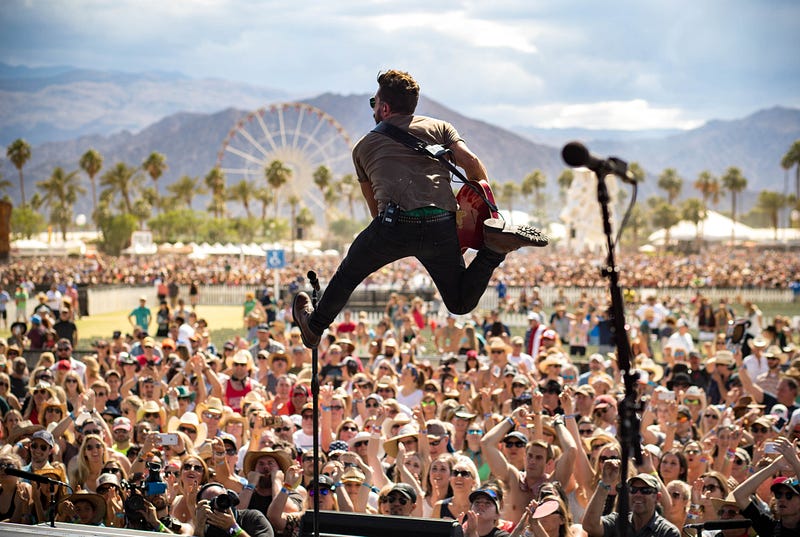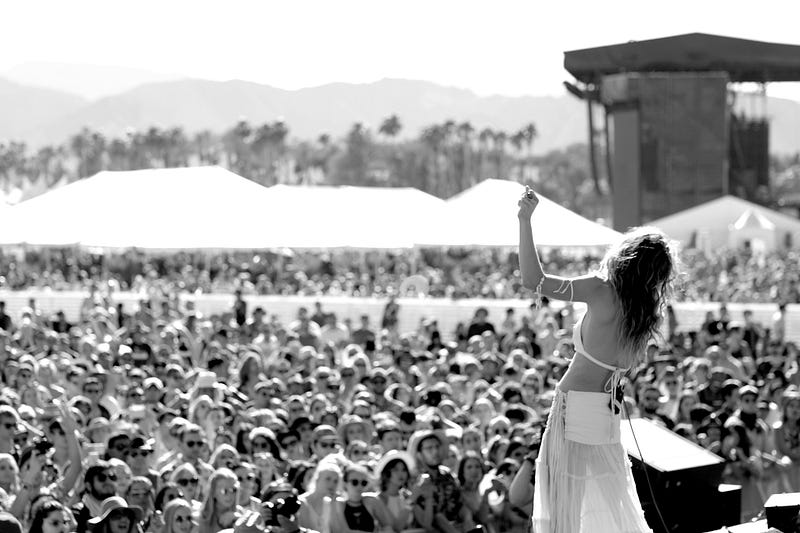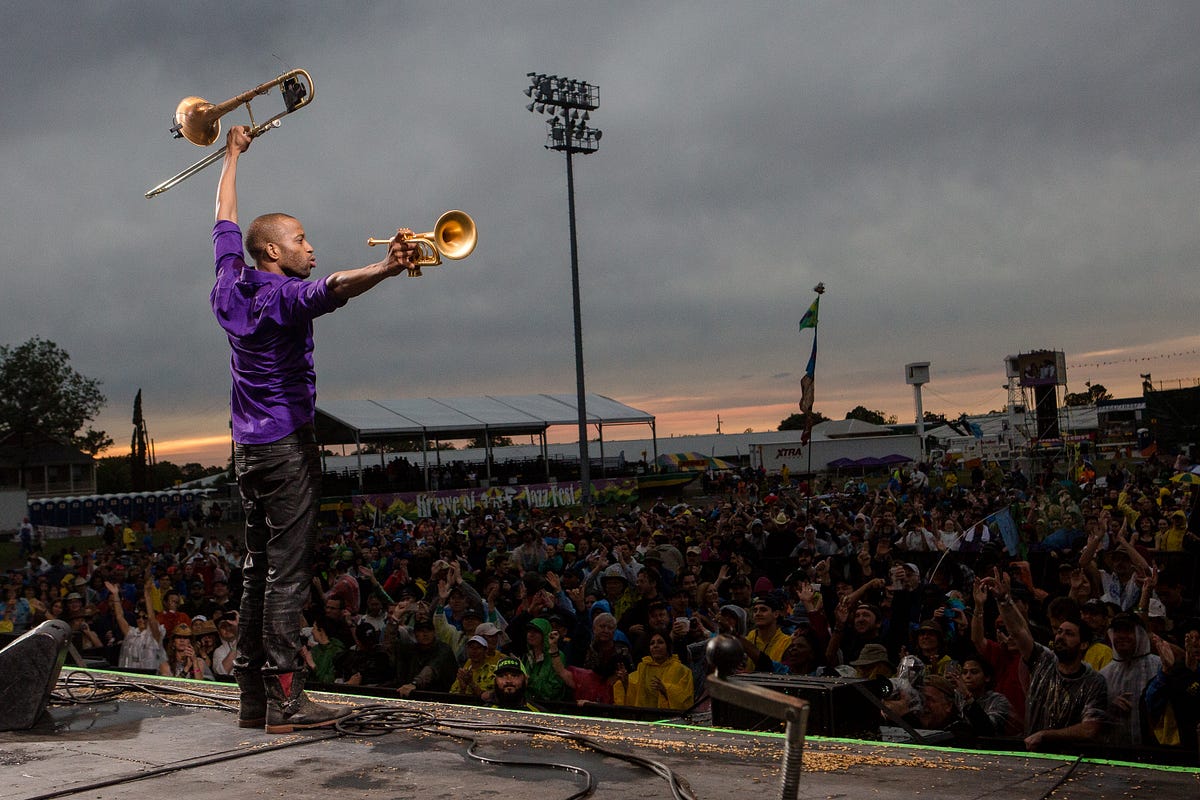Music Festivals: Revenue For Event And Host City Is Staggering
_________________________________________
By Steve Baltin for The Grammys
April is festival month at the Empire Polo Fields in Indio, California with two weekends of Coachella, followed by country music fest Stagecoach. As large as the names are at the two events, from Guns ’N’ Roses, Calvin Harris, and Ice Cube, to Sam Hunt, Carrie Underwood, and John Fogerty, the biggest thing about Coachella and Stagecoach is the mind-boggling economics.

The numbers are staggering. According to a new study published by the Desert Sun this past March, Coachella and its country music counterpart, Stagecoach, are expected to generate $704 million—$403 million of which will directly benefit businesses in the Coachella Valley. Businesses directly in the city of Indio, home of the Empire Polo Fields, will take in $106 million from the three weekends. Five percent of the city’s total fund comes from the $3.18 million in revenue coming from ticket taxes.
Those numbers, as massive as they are, don’t include the revenue that comes into surrounding areas like Los Angeles and Pomona from “Localchella,” the side shows from Coachella acts in between the two weekends. During the Monday to Thursday that separated the two weekends, marquee acts like Rancid, Of Monsters And Men, Miike Snow, and Silversun Pickups hit local clubs and venues for sold-out shows.
Zella Day told us that she had taken the beginning of 2016 off touring, but was using Coachella as the launch to her latest dates on the road. To her, a single appearance at Coachella generates enough energy and buzz amongst fans to kick-start the momentum of her tour.

“Coachella, for me, when I was given this honor to play, what I was most excited about was the fact that other people were gonna be really excited about me now too, because I am a new artist and new artists need these things, they need these moments of the push uphill,” she said. “That’s what this has been for me.”
As the number-one and number-three grossing festivals in America in 2015, respectively, the two had some of the largest numbers, but they are far from the only festivals that directly impacts their host city. New Orleans’ Jazz Fest, happening the last two weekends in April, ends by 7 p.m. every day of the festival to channel people into the local clubs, according to Quint Davis, CEO of Festival Productions.
“We end at 7 so people eat their brains out here, I don’t know how they do it, they go back to the hotel or go home, clean up, go out to one of the 500 incredible restaurants in New Orleans, eat another meal and we’ve got like 50 live music clubs that are having two to three live bands a night going to 3 or 4 in the morning,” he says. “And they’re all out there in this other big part of the festival, the nighttime music scene.”

Trombone Shorty, a New Orleans native who will have the honor of closing out the festival this year, seconds that. “During Jazz Fest, no one sleeps ’cause there’s literally 24 hours of music. I remember doing some shows at Jazz Fest that started at 4 a.m. After the festival, there are a bunch of incredible night shows,” he says.
Like Coachella, which brings revenue to the city through tourists whose entertainment demands support — among other things — a number of side shows, Jazz Fest is a huge economic part of its local scene, bringing in $300 million annually to New Orleans.
With the money and tourism impact major music festivals bring into local markets, it’s little wonder that new festivals pop up seemingly every weekend. Just this year Coachella promoters, Goldenvoice, announced they’re bringing the new Panorama Festival to New York. In Dana Point, CA there is the new Ohana Festival this August.
In the rare case that an established festival comes up for grabs, it’s snatched up before every interested city has had a chance to place a bid. For example, when electronic music juggernaut EDC moved from Los Angeles after complications in 2010, Las Vegas quickly stepped in and was well-rewarded when the festival brought over $200 million in to the local economy both in 2012 and 2013.
More than that, the addition of EDM Biz, a week-long conference leading up to the festival, brings in additional music acts and parties to local clubs. So the impact, musically and economically, stretches out for a whole week. Case in point, while EDC Vegas goes from June 17 to 19, EDM Biz extends the festivities with three additional nights of club shows, starting with Afrojack playing Omnia June 14, and wrapping with Galantis and Loco Dice on June 16 at Marquee.
The musical effect on local markets is equally significant. For locals or tourists who don’t want to deal with the massive festival crowds or pay festival prices “Localchella” or Lollapalooza after shows create mini-tours in the market. The after shows for this year’s Lollapalooza in Chicago have not yet been announced, but 2015 featured Twenty One Pilots, Walk The Moon, Alesso, and Brand New, among 50 headliners, playing local small venues.
Then there is the simple matter of how music festivals can show off a city or town. Look at the cultural impact Bonnaroo has had on Manchester, Tennessee, a place where hometown pride is huge. Grace Potter, a veteran of shows like Bonnaroo and Jazz Fest, set up her own festival, Grand Point North, in her hometown of Burlington, Vermont. It proudly features Grand Point Local, billed on the website as “a collection of local restaurants and local food products for sale. Grand Point Local was created to celebrate local food by highlighting some of Vermont’s best purveyors.”

To Grace, more than economically or musically, it’s the local aspect that makes Grand Point special. “It’s successful because so much of the community is devoted to really sharing the best of Vermont.”
Whether it’s The Killers at Life Is Beautiful in Vegas, Queens Of The Stone Age at Coachella, or Trombone Shorty at New Orleans Jazz Fest, artists have long been repping their hometown at festivals. And as concertgoers know from decades of shows, there is always something special about the hometown gig. Doing it in front of massive audiences that have traveled from all over the globe to see this hometown gig makes that time-honored cliché of “It’s great to be back at home,” that much more true and more special.